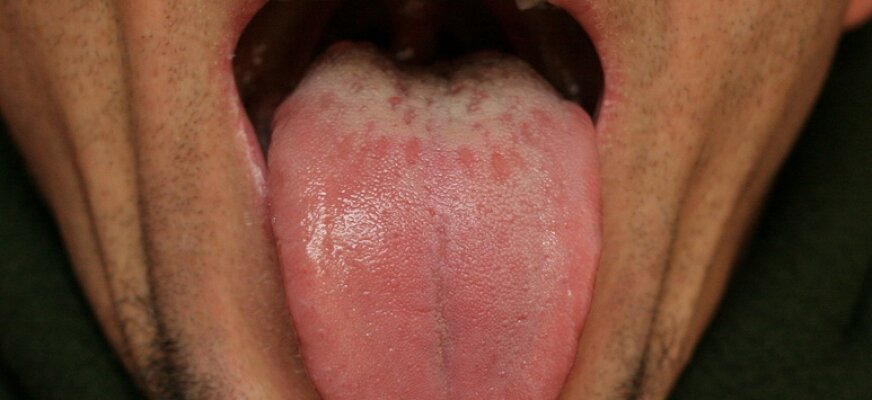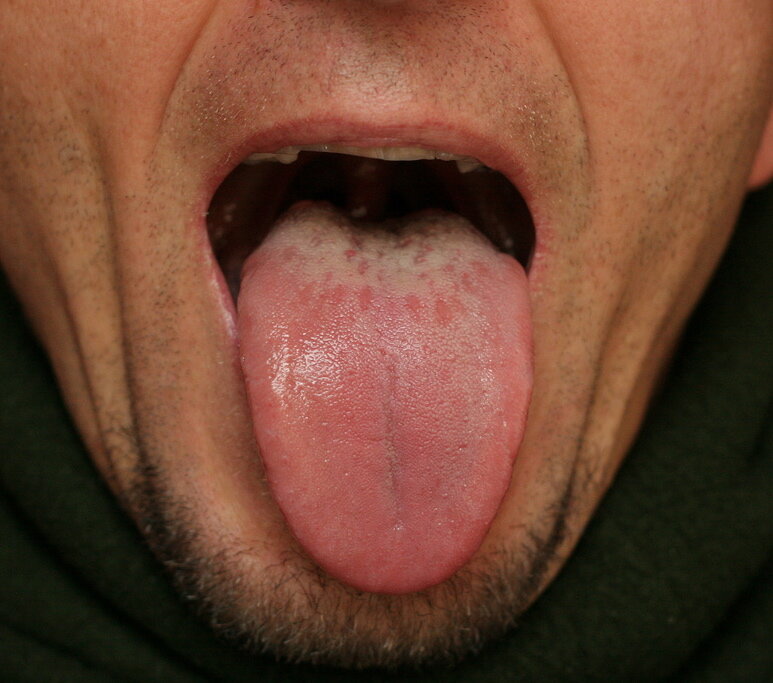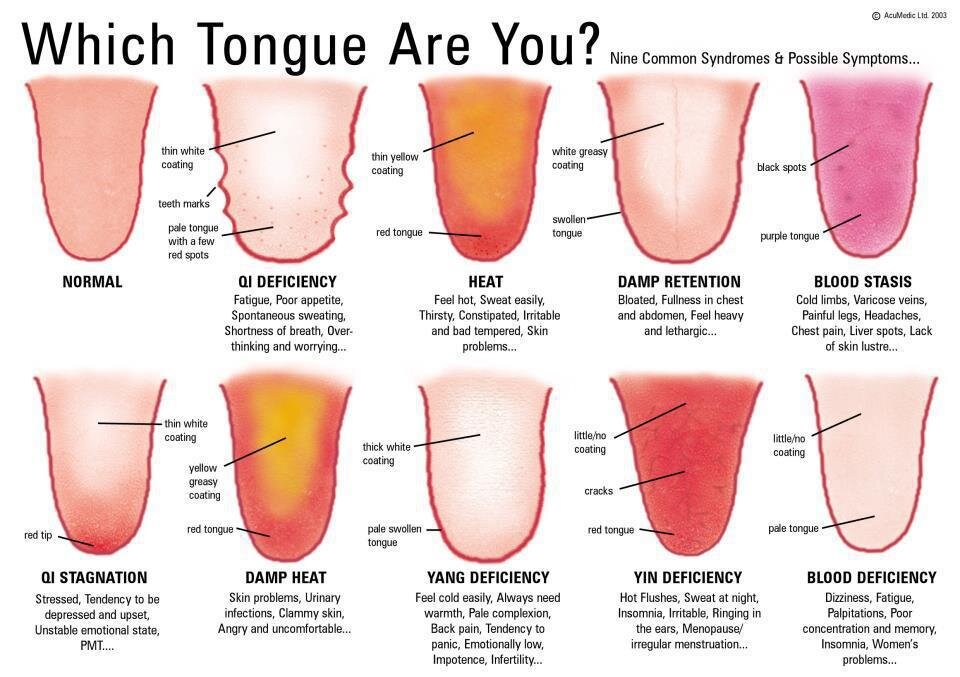handmirror
There comes a point in every patient interview that acupuncturists do where we ask to take a look at the patient's tongue. We know it sounds odd, and it feels strangely intimate to show someone your tongue, but this simple act actually gives us a lot of information about how your systems are functioning. It's also one of the ways that YOU can monitor your own health.
Here are a few commonly-asked questions about tongue diagnosis.
WHY do you want to look at my tongue?
It's the closest that we can get to looking inside your body, for one thing.
It shows us how well your digestive and circulatory systems are working, how moist or dehydrated your body is, and the state of your body's Qi. Additionally, it gives us information about the health of your organ systems. We look at the color, shape and size of the tongue body, and the color, thickness, and quality of the fur that sits on the tongue.
Say, for instance, that two people come in on the same day with dull, heavy headaches at their foreheads. Patient #1 has a pale, swollen tongue with a thick white coat, while Patient #2 has a bright red tongue with a yellow coat.
TCM treats these two patients very differently. Patient #2 shows signs of heat so we would clear the heat, while Patient #1 may have a lack of internal heat or Qi, with some damp accumulation. The tongue isn't the only thing that factors into our diagnosis, but it does play a major part.T
ake a look at your tongue right now. What do you see?
What does a healthy tongue look like?
An ideal tongue should be a fresh pink-red color, not too pale or too scarlet, and not purplish. It should be a size that is proportional to the person's body, it's edges should be smooth, and it shouldn't have deep cracks.
There should be a coat on top that is fairly thin -definitely thin enough to see the tongue color through - and that coat should be white.
What types of tongues do we commonly see in the clinic?
(Click on these pictures to get a closer look)
Pale tongue body: This can show either qi, yang, or blood deficiency. Tongue #1 is pale and puffy and there are slight teethmarks. These factors probably all indicate a Qi or Yang deficiency. A pale tongue is common for people when they are feeling fatigued and for women especially after their periods.
Bright red tongue body: A very red or scarlet tongue shows heat in the body. Tongue #2 is a fresh red color but may be fairly normal for this person, showing that he probably runs a little warm. Someone with a very red tongue should probably avoid spicy foods and alcohol.
Thick coating on the tongue: A thick coat shows an excess of some kind. It may be excess heat or cold, or an accumulation of dampness in the body. The thick fur may be all over the tongue as with Tongue #3 or just in one area as with Tongue #2. Tongue #3 happens to be a common tongue picture after a round of antibiotics. If you see a thick coat on your tongue, it might be time to avoid damp-producing foods such as dairy, greasy foods, simple carbohydrates/sugars, and alcohol.
No coat with a dry tongue: This tongue shows yin or fluid deficiency. Another sign of yin deficiency is a tongue with deep cracks.
Purplish tongue color: We call this purplish color 'dusky' and it shows stagnation of some kind, either qi or blood stagnation. This is a common tongue when people have been sitting for too long or for women just before their periods start. Tongue #4 is a good picture of a dusky tongue. If your tongue looks like this, get off the computer and get outside for a walk, breathe deeply and get your qi moving!
We use the tongue picture, along with the pulse and all the symptoms a person reports to us, to make our diagnosis. For all of these imbalances, acupuncture and herbs can help you get back to a more balanced state. Don't put too much effort into diagnosing yourself, but keeping an eye on your tongue is a good way to monitor the effects of your lifestyle and dietary choices. Here's a fun chart you can refer to when looking at your tongue:
[Photo credit: Bruce Peters]







